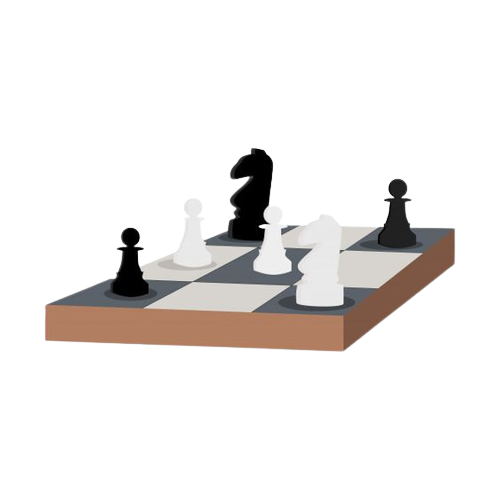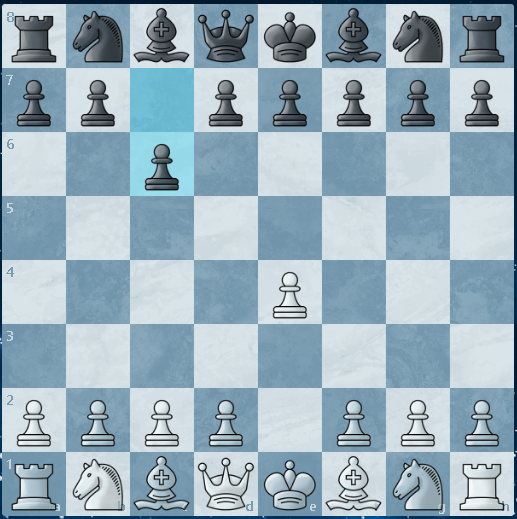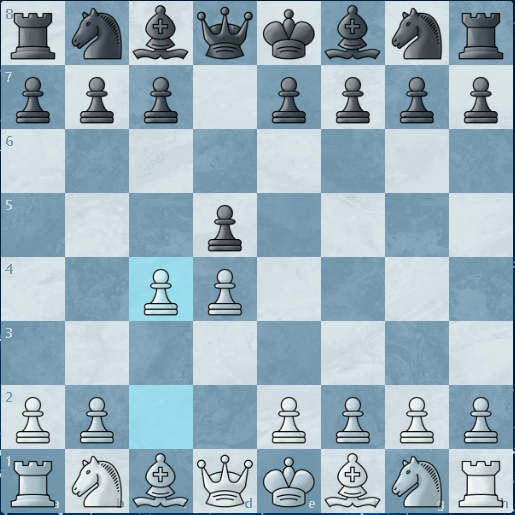Chess Courses for All Ages:
Start Your Journey
Today
chess for kids | beginner | advance | opening | middle-game | end-game
.png)

Unleash Your Child's Inner Grandmaster:
Chess for Kids, Where Strategy Meets Fun!
At Chess for Kids, we help children sharpen their strategic skills
through an exciting chess adventure. With experienced instructors
and innovative teaching methods, we create valuable experiences that
inspire and educate. Here are ways to teach chess to children
rigorously:
1. Choose the Right Time:
- Ensure that the child is in a good
mood and not too tired when you decide to teach chess. Pick a calm
and distraction-free time.
2. Understand the Basic Rules:
- Begin by introducing the
fundamental rules of chess to the children, such as the movements of
the pieces and the objectives of the game.
3. Introduce Pieces:
- Start with just a few chess pieces: the
king, queen, rook, or maybe a few pawns. Explain the movement of
each piece separately.
4. Play Simple Games:
- After explaining the piece movements,
play simple games with only a few pieces on the chessboard. The main
goal is to make the children comfortable with the chessboard.
5. Teach Basic Concepts:
- Explain basic concepts like
"check," "checkmate," "castling," and "double attack" in simple
terms. Use concrete examples to illustrate these concepts.
6. Regular Practice:
- Provide children with opportunities to
practice regularly. Practice playing quick and straightforward games
with them.
7. Use Appropriate Learning Materials:
- There are many
resources designed specifically for teaching chess to children, such
as books, board games, and software. You can use these resources to
assist in teaching.
8. Make It Fun:
- Ensure that the chess learning experience is
enjoyable for the children. Avoid being too strict or overly
competitive. Let them enjoy the game and learn naturally.
9. Provide Positive Feedback:
- Offer praise and encouragement
when children make good moves or come up with clever strategies.
10. Show Professional Games:
- To inspire children, show them
professional chess games or stories about famous chess players. This
can spark their interest in the game.
11. Teach Playing Etiquette:
- Teach children about playing
etiquette, such as being a good sport, respecting opponents, and
following the rules of the game.
12. Progress with Appropriate Curriculum:
- Once children have
mastered the basics, you can introduce them to more advanced
strategic concepts, such as opening development and tactics.
Throughout the teaching process, it's essential to listen to
children's questions and respond appropriately. Keep in mind that
their progress in chess will happen gradually, so be patient and
allow them to grow in the game.
THE COURSE IS COMING SOON!
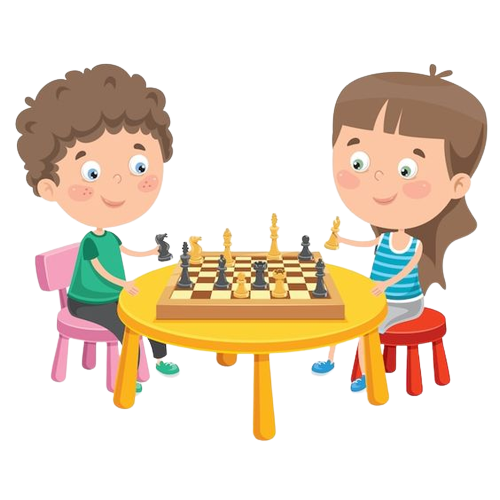
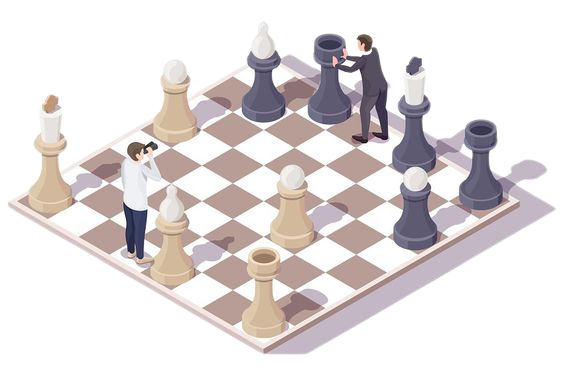
Just Look For Tactics!
In middlegame phase, you must look at checks, captures, and
attack.Playing chess in the middle game involves various advanced
strategies and tactics compared to the opening phase. Here are some
concise steps for playing chess in the middle game:
1. Develop Your Pieces:
- Focus on developing your pieces (pawns and knights) to stronger
positions in the center of the board. Move your pieces out of the
initial defensive zones to more active positions.
2. Control the Center:
- Strive to control the central squares of the chessboard with your
pieces. The center provides flexibility and strength.
3. Castling:
- Castling is a crucial move to keep your king safe. Choose
whether to castle kingside or queenside based on the situation.
4. Plan for an Attack:
- Identify your opponent's weaknesses and look for
opportunities to launch an attack. You can build an attack by
coordinating your pieces.
5. Consider Pawn Structure:
- Understand your pawn structure and plan accordingly based on
the advantages or weaknesses that may arise within the pawn
structure.
6. King Safety:
- Ensure your king is safe and not under direct threats from
your opponent. This might involve piece development and avoiding
tactical threats.
7. Utilize Knights:
- Make good use of your knights. They can be strong pieces for
launching attacks or maintaining positions.
8. Evaluate Exchanges:
- Carefully consider piece exchanges. Exchanges should be
advantageous for you, such as capturing opponent pieces or improving
your pawn structure.
9. Coordinate Pieces:
- Ensure your pieces work together efficiently. Coordinate
both attack and defense effectively.
10. Review the Game:
- Continually assess the chessboard to identify threats and
opportunities. Avoid becoming overly fixated on your own plans to
the point of missing your opponent's threats.
11. Manage Your Time:
- Be mindful of the time you spend on each move. Don't get
caught up in overly lengthy debates.
During the middle game, it's important to remain flexible and be
ready to adapt your strategies based on the development of the game.
Strive for a balance between offense and defense, and carry out
deeper planning to win the game.
THE COURSE IS COMING SOON!
Last Phase of a Chess Match
The endgame is the final phase of a chess game, where you must be
extremely careful and make good moves in a short amount of time.
Playing chess in the endgame phase involves different strategies and
goals compared to the opening and middle game. Here are some concise
steps for playing chess in the endgame:
1. King Activity:
- Bring your king to a central and active position. In the
endgame, the king plays a more active role.
2. Pawn Promotion:
- Focus on promoting pawns to queens or other powerful pieces.
The endgame often centers around pawn promotion.
3. Piece Activity:
- Activate your remaining pieces and put them in positions to
control the board. Active pieces are crucial in the endgame.
4. Centralization:
- Centralize your king and pieces to exert maximum influence
on the board.
5. King Safety:
- Keep your king safe and avoid any potential checks and
threats from your opponent's pieces.
6. Passed Pawns:
- Recognize and support your passed pawns. Passed pawns are
powerful in the endgame.
7. Opposition:
- Understand and use the concept of opposition to control key
squares and advance your king.
8. King and Pawn Endings:
- Learn key king and pawn endgame techniques, such as the
opposition and the square of the pawn.
9. Piece Exchanges:
- Carefully evaluate piece exchanges and consider whether they
lead to favorable endgame positions.
10. Time Management:
- Be mindful of the clock and avoid unnecessary time pressure
in the endgame.
11. Endgame Fundamentals:
- Familiarize yourself with basic endgame principles, such as
the rule of the square and key endgame positions.
In the endgame, precision and technique are crucial. Understanding
the principles of pawn promotion, king activity, and piece
coordination will help you navigate this phase of the game
effectively.
THE COURSE IS COMING SOON!
